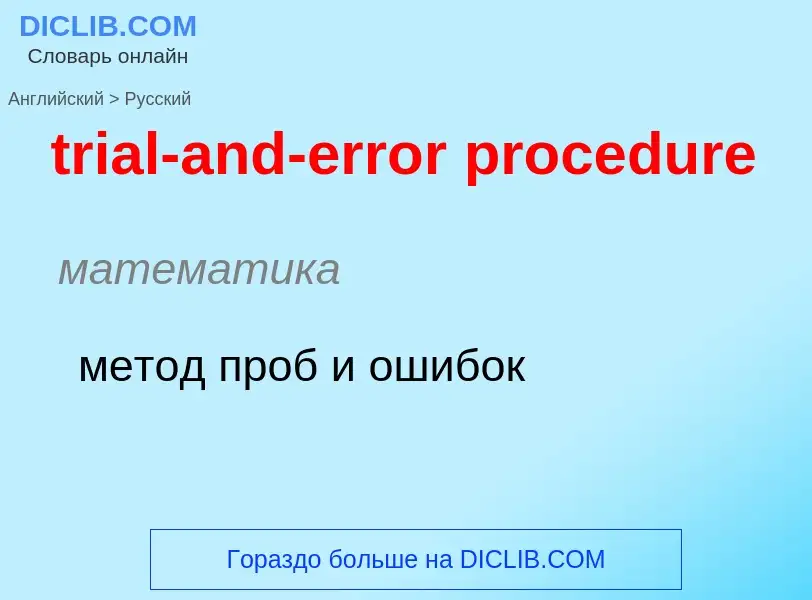Vertaling en analyse van woorden door kunstmatige intelligentie ChatGPT
Op deze pagina kunt u een gedetailleerde analyse krijgen van een woord of zin, geproduceerd met behulp van de beste kunstmatige intelligentietechnologie tot nu toe:
- hoe het woord wordt gebruikt
- gebruiksfrequentie
- het wordt vaker gebruikt in mondelinge of schriftelijke toespraken
- opties voor woordvertaling
- Gebruiksvoorbeelden (meerdere zinnen met vertaling)
- etymologie
trial-and-error procedure - vertaling naar russisch
математика
метод проб и ошибок
общая лексика
метод проб и ошибок
метод подбора
Definitie
Ошибка, оговорка, досадный промах (обычно в устной речи и на письме).
Wikipedia
Trial and error is a fundamental method of problem-solving characterized by repeated, varied attempts which are continued until success, or until the practicer stops trying.
According to W.H. Thorpe, the term was devised by C. Lloyd Morgan (1852–1936) after trying out similar phrases "trial and failure" and "trial and practice". Under Morgan's Canon, animal behaviour should be explained in the simplest possible way. Where behavior seems to imply higher mental processes, it might be explained by trial-and-error learning. An example is a skillful way in which his terrier Tony opened the garden gate, easily misunderstood as an insightful act by someone seeing the final behavior. Lloyd Morgan, however, had watched and recorded the series of approximations by which the dog had gradually learned the response, and could demonstrate that no insight was required to explain it.
Edward Lee Thorndike was the initiator of the theory of trial and error learning based on the findings he showed how to manage a trial-and-error experiment in the laboratory. In his famous experiment, a cat was placed in a series of puzzle boxes in order to study the law of effect in learning. He plotted to learn curves which recorded the timing for each trial. Thorndike's key observation was that learning was promoted by positive results, which was later refined and extended by B. F. Skinner's operant conditioning.
Trial and error is also a method of problem solving, repair, tuning, or obtaining knowledge. In the field of computer science, the method is called generate and test (Brute force). In elementary algebra, when solving equations, it is guess and check.
This approach can be seen as one of the two basic approaches to problem-solving, contrasted with an approach using insight and theory. However, there are intermediate methods which for example, use theory to guide the method, an approach known as guided empiricism.
This way of thinking has become a mainstay of Karl Popper's critical rationalism.

